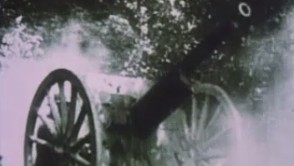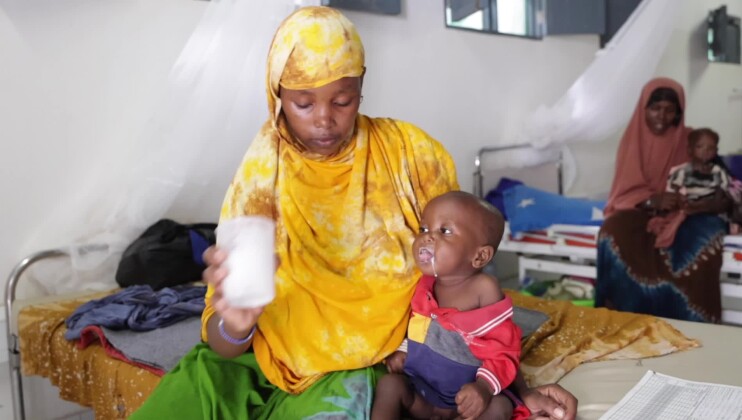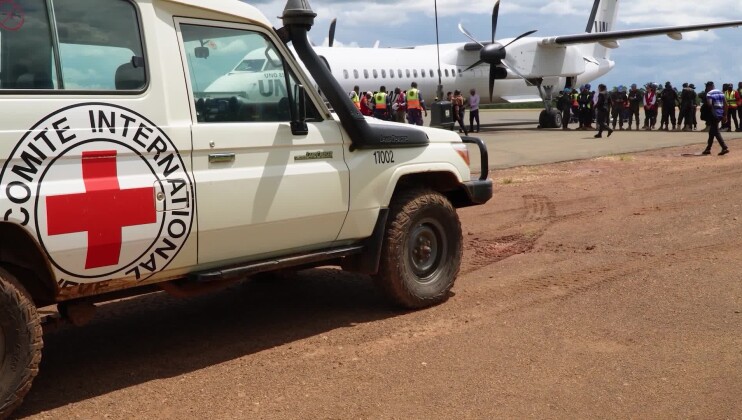ICRC marks 150 years of humanitarian action

This is a modal window.
On World Red Cross Red Crescent Day (May 8) the International Committee of the Red Cross (ICRC) marks 150 years since it was founded. Speaking from the ICRC headquarters in Geneva, Peter Maurer, President of the ICRC, said, "This means 150 years of engagement in conflict in which ICRC brought assistance to millions of people."
It was on the 17 February1863 that the International Committee for Relief for War Wounded soldiers, later to become the International Committee of the Red Cross, met for the first time. What started as an idea among a small group of Swiss citizens is today an organization with about 13,000 men and women of 125 nationalities working in 92 countries worldwide, often in difficult circumstances.
From the trench warfare of the First World War to today's Arab spring conflicts, the ICRC has assisted victims of armed conflict in the major and forgotten wars of the past 150 years. This covers the first two World Wars, the Turkish-Greek conflict (1919-1923), where ICRC delegates provided medical assistance to prisoners of war, to providing relief to migrant workers fleeing the violence in Misrata, Libya in 2011.
In the 1950s, the ICRC supplied basic goods and water during the conflict in Palestine. From 1967-1970, the ICRC conducted one of its largest relief operations during the civil war in Biafra, Nigeria. In the 1980s, during the famine that ravaged Ethiopia, the ICRC and the Ethiopian Red Cross worked together to deliver 100,000 tonnes of food and other essential items in 1985 alone.
More recently, the institution has been present in armed conflicts in such places as: Angola, the Former Yugoslavia, Nepal, Peru and Sri Lanka. Today, its action of bringing relief and ensuring respect for the rules of war in conflicts continues in Afghanistan, the Democratic Republic of Congo, Iraq, Mali, Sudan, Somalia and Syria.
President Maurer stresses that the 150th anniversary also offers an opportunity to look to the future and focus on new challenges to humanitarian action, among them the evolving nature of warfare, the use of new remote weaponry, and the increasing number of non-state actors involved in conflict today.
On this occasion, the ICRC is making available rarely seen photos, videos and documents from nearly 150 years of humanitarian action on the ICRC Video Newsroom www.icrcvideonewsroom.org/icrc150 .
This selection of video provides a small sample of material from the new archive, telling the visual story of 150 years of conflict and humanitarian action.
Key Historic Dates
- 24 June (1859). Battle of Solferino, which inspired Henry Dunant to write his book "A Memory of Solferino" outlining his vision of humane treatment for the wounded in battle.
- 17 February (1863). Founding of the International Committee for Relief to Wounded Soldiers, later to become the International Committee of the Red Cross.
- 26-29 October (1863). International conference held in Geneva, leading to the creation of National Societies and adoption of the red cross as a protective emblem.
- 22 August (1864). The original Geneva Convention is adopted to protect the sick and wounded in armies in the field. It paved the way for the four 1949 Geneva Conventions.
- 27 July (1929). The red crescent is officially recognized as a protective emblem.
Shotlist
Length: 3:54
Format: Mpeg2 / 16:9 anamorphic
Sound: English, international
ICRC ref: AV057N
Date: 14.02.13
Copyright: ICRC access all
00.00 First World War: Trenches. Cannon firing, tanks advancing with soldiers
00.07 Greco-Turkish War: Emergency medical assistance during prisoners exchange (1923)
00.15 Providing water for homeless in Palestine (1950)
00.28 Repatriation of wounded through Jordan/Israel border (1967)
00.33 Medical assistance to undernourished children. Biafra, Nigeria (1968)
00.48 Distribution of essential items. Vietnam (1975)
01.01 Distribution of essential items, Ethiopia (1984)
01. 09 ICRC convoy through very muddy mountain roads, Tajikistan (1996)
01.18 ICRC car passing in front of destroyed tank, Tajikistan (1996)
01.25 War surgery in the field, Darfur (2005)
01.31 ICRC delegates visiting detainees. Interviewing a detainee without witnesses. Writing a family message, Nepal (2006)
01.45 Thousands of migrants struggle to get home on the Egypt/Libya border. Sallum, Egypt, (2011)
01.59 Distribution of essential items to Sudanese refugees. South Sudan (2012)
02.12 Medical treatment in Malakal Hospital. South Sudan (2012)
02.23 Moving family reunification in front of ICRC car. Peru (2004)
02.39 The Battle of Solferino, painting by Carlo Bossoli
02.42 Henry Dunant (1863), founder of the ICRC, first Nobel Peace Prize winner
02.45 The founding members of the ICRC (1863)
02.48 Mr Peter Maurer, President, ICRC (close-up):
"This means 150 years of engagement in conflicts in which ICRC brought assistance to millions of people."
03.00 Mr Peter Maurer, President, ICRC (medium shot):
"Conflicts are evolving and changing their nature. New weapons coming to conflict, new types of actors coming to conflict theatres, non-state actors in increasing numbers, but it's also on finding the way in the broader humanitarian community today and defining how ICRC relates to other humanitarian actors, starting with the Red Cross and Red Crescent Movement, going to non-state actors, to different strategic environments in which we are finding ourselves. It's a broad range of challenges we are confronted with as humanitarian actors and, definitely, this is a good opportunity to think how about we best address."
03.54 End



